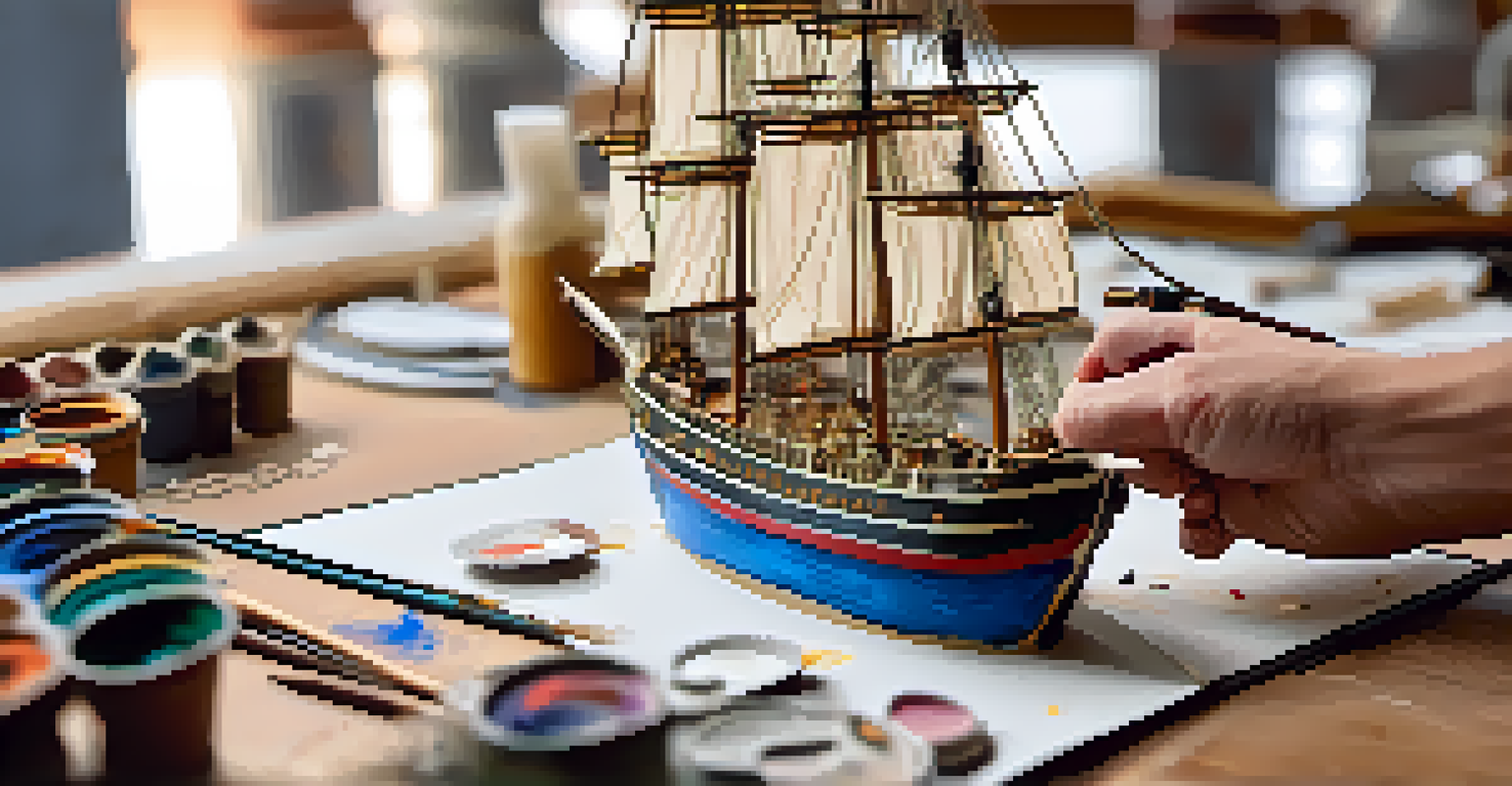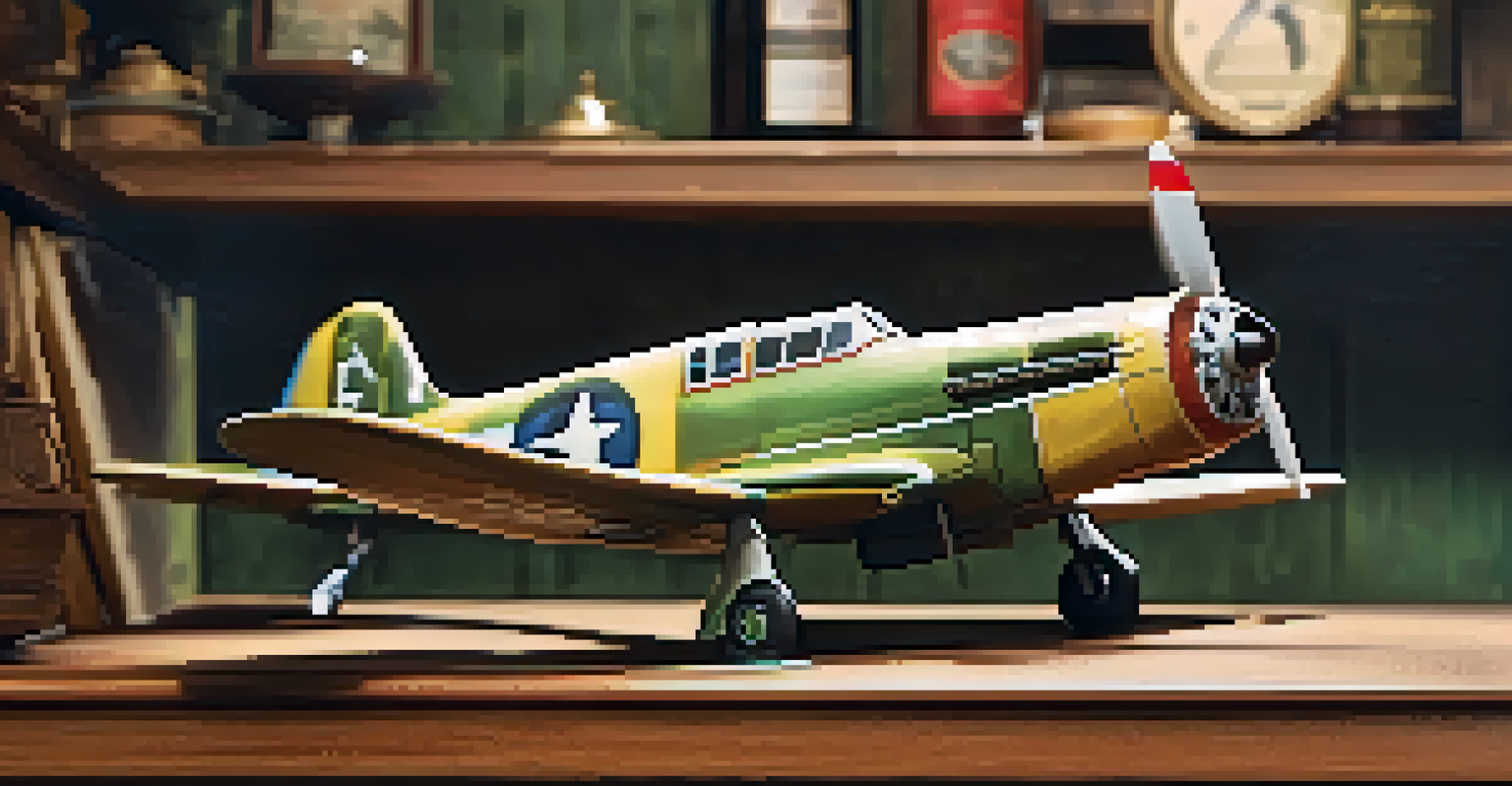Common Mistakes to Avoid in Scale Model Building

Skipping the Planning Stage Can Lead to Errors
One of the biggest missteps in scale model building is diving in without a plan. Just like constructing a house, you need a blueprint to guide your work. Without proper planning, you may miss out on important details or even end up buying unnecessary materials.
Plan your work and work your plan.
Taking time to research your model, gather reference images, and outline the steps can save you significant headaches later. Think of it as mapping out a road trip; you wouldn't want to get lost halfway through your journey. A well-thought-out approach sets the stage for a smoother building experience.
Additionally, a clear plan can help you identify potential challenges early on. This foresight allows you to gather the right tools and materials, ensuring you're fully prepared to tackle your project head-on.
Neglecting to Read Instructions Thoroughly
It might seem tempting to skip reading the instructions when you're excited about your scale model. However, overlooking this crucial step is a common mistake that can lead to frustration. Just like assembling furniture, following the instructions ensures you don't miss important steps or make costly errors.

Many model kits come with detailed guidelines that can offer valuable tips on assembly and painting. By taking the time to familiarize yourself with these instructions, you’re setting yourself up for success. Think of it as a recipe; skipping steps can lead to a less-than-delicious outcome.
Planning Prevents Common Errors
Taking the time to plan your scale model project ensures you avoid costly mistakes and enhances the overall building experience.
Moreover, some parts may require specific techniques that you might not be aware of if you don’t read the instructions carefully. Don’t underestimate the value of this guidance—it can make a significant difference in the final quality of your model.
Using the Wrong Tools Can Complicate the Process
Imagine trying to bake a cake without the right utensils; it would be a messy disaster! The same principle applies to scale model building. Using improper tools can complicate your project and lead to frustration. Investing in the right tools—like precision cutters, tweezers, and hobby knives—can make your work significantly easier.
The details are not the details. They make the design.
Different models may require specific tools, so it’s crucial to assess what you need before starting. For instance, airbrushes can provide a smooth finish for painting, while fine brushes allow for intricate detailing. Having the right equipment can elevate your craftsmanship and enhance the overall outcome of your model.
Additionally, using subpar tools can result in damage to the model or yourself. Prioritize quality over quantity when it comes to your toolkit, and you'll find the building process much more enjoyable.
Ignoring Surface Preparation Leads to Poor Adhesion
Surface preparation is often overlooked by novice builders, but it’s vital for achieving a solid bond when assembling parts. Just as a painter preps a wall before applying paint, you should ensure surfaces are clean and properly sanded. This step can prevent unsightly gaps and ensure that adhesives bond effectively.
If the surfaces are not prepped, you might find your model falling apart at the seams. A little extra effort in this stage goes a long way. Picture it like laying a foundation for a building; without a solid base, everything above it is at risk.
Right Tools Make a Difference
Using the appropriate tools for your model can simplify the building process and improve the final quality of your work.
Furthermore, properly prepared surfaces can enhance paint adhesion, resulting in a smoother finish. It’s a small step that can have a significant impact on the overall quality of your model.
Rushing the Painting Process Can Ruin Your Model
When it comes to painting your scale model, patience is key. Rushing through this process can lead to drips, uneven coverage, and a less polished look. Think of it as creating a masterpiece; great art takes time and attention to detail.
Allowing each layer of paint to dry thoroughly before applying the next one is crucial. This practice prevents colors from muddling together and ensures a clean finish. Just like a fine wine, good results come to those who wait!
Additionally, consider using multiple thin coats rather than one thick one. This technique not only improves the overall finish but also reduces the risk of paint runs. By taking your time, you’ll achieve a result that you can truly be proud of.
Forgetting to Take Breaks Can Lead to Mistakes
Building a scale model can be an engrossing activity, but forgetting to take breaks can lead to fatigue and mistakes. Just as athletes need rest to perform at their best, so do model builders. Taking regular breaks allows you to step back and view your work with fresh eyes.
When you’re tired, it’s easy to overlook details or make careless errors. By giving yourself a chance to recharge, you can come back to your model with renewed focus and energy. It’s similar to a long hike; stopping to catch your breath can enhance your overall experience.
Final Touches Enhance Your Model
Neglecting the final details can diminish your hard work, while those finishing touches can elevate your model to a whole new level.
Moreover, stepping away can provide you with new perspectives on your project. You might come up with creative solutions to challenges or notice areas that need improvement when you return. Remember, a rested mind is a productive mind!
Not Seeking Feedback Can Stunt Your Growth
One of the joys of scale model building is sharing your work with others and learning from their insights. Not seeking feedback can limit your growth as a builder. Just as a chef values taste testers, you can benefit from the perspectives of fellow hobbyists or friends.
Feedback can point out areas of improvement that you might not see yourself. Engaging with others in the model-building community can also inspire new techniques and ideas. It’s like being part of a team; collaboration often leads to better results.

Additionally, constructive criticism can encourage you to push your skills further. Embracing feedback, whether positive or negative, is a crucial step in your development as a model builder. Remember, every great artist was once a beginner!
Overlooking Final Touches Can Diminish Your Work
After putting in all the hard work to build your scale model, it's easy to overlook the final touches. However, these small details can significantly elevate your project. Think of these final adjustments as the icing on a cake; they can transform something good into something spectacular.
Final touches might include adding decals, weathering effects, or even subtle paint corrections. These elements can add realism and personality to your model. Just like an actor perfects their performance with nuances, your model deserves that extra care.
Neglecting these details can leave your model looking unfinished or lackluster. Take the time to review your work and add those finishing touches; they can make all the difference in showcasing your craftsmanship.